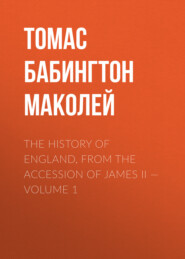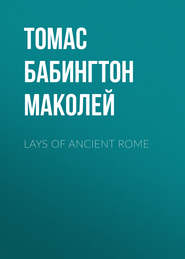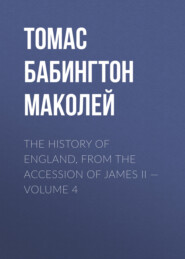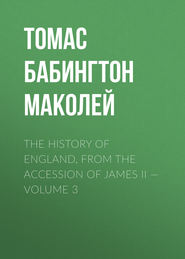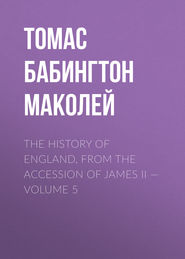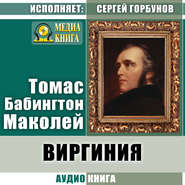По всем вопросам обращайтесь на: info@litportal.ru
(©) 2003-2024.
✖
Miscellaneous Writings and Speeches — Volume 2
Настройки чтения
Размер шрифта
Высота строк
Поля
06 to 1 5 4146
06 1 2557
Then comes the shout of exaltation as regularly as the Gloria Patri at the end of a Psalm. "Is there any possibility of gainsaying the conclusions these facts force upon us; namely that the fecundity of marriages is regulated by the density of the population, and inversely to it?"
Certainly these tables, taken separately, look well for Mr Sadler's theory. He must be a bungling gamester who cannot win when he is suffered to pack the cards his own way. We must beg leave to shuffle them a little; and we will venture to promise our readers that some curious results will follow from the operation. In nine counties of England, says Mr Sadler, in which the population is from 100 to 150 on the square mile, the births to 100 marriages are 396. He afterwards expresses some doubt as to the accuracy of the documents from which this estimate has been formed, and rates the number of births as high as 414. Let him take his choice. We will allow him every advantage.
In the table which we have quoted, numbered lxiv., he tells us that in Almondness, where the population is 267 to the square mile, there are 415 births to 100 marriages. The population of Almondness is twice as thick as the population of the nine counties referred to in the other table. Yet the number of births to a marriage is greater in Almondness than in those counties.
Once more, he tells us that in three counties, in which the population was from 300 to 350 on the square mile, the births to 100 marriages were 353. He afterwards rates them at 375. Again we say, let him take his choice. But from his table of the population of Lancashire it appears that, in the hundred of Leyland, where the population is 354 to the square mile, the number of births to 100 marriages is 391. Here again we have the marriages becoming more fruitful as the population becomes denser.
Let us now shuffle the censuses of England and France together. In two English counties which contain from 50 to 100 inhabitants on the square mile, the births to 100 marriages are, according to Mr Sadler, 420. But in forty-four departments of France, in which there are from one to two hecatares to each inhabitant, that is to say, in which the population is from 125 to 250 or rather more, to the square mile, the number of births to 100 marriages is 423 and a fraction.
Again, in five departments of France in which there is less than one hecatare to each inhabitant, that is to say, in which the population is more than 250 to the square mile, the number of births to 100 marriages is 414 and a fraction. But in the four counties of England in which the population is from 200 to 250 on the square mile, the number of births to 100 marriages is, according to one of Mr Sadler's tables, only 388, and by his very highest estimate no more than 402.
Mr Sadler gives us a long table of all the towns of England and Ireland, which, he tells us, irrefragably demonstrates his principle. We assert, and will prove, that these tables are alone sufficient to upset his whole theory.
It is very true that, in the great towns the number of births to a marriage appears to be smaller than in the less populous towns. But we learn some other facts from these tables which we should be glad to know how Mr Sadler will explain. We find that the fecundity in towns of fewer than 3000 inhabitants is actually much greater than the average fecundity of the kingdom, and that the fecundity in towns of between 3000 and 4000 inhabitants is at least as great as the average fecundity of the kingdom. The average fecundity of a marriage in towns of fewer than 3000 inhabitants is about four; in towns of between 3000 and 4000 inhabitants it is 3.60. Now, the average fecundity of England, when it contained only 160 inhabitants to a square mile, and when, therefore, according to the new law of population, the fecundity must have been greater than it now is, was only, according to Mr Sadler, 3.66 to a marriage. To proceed,—the fecundity of a marriage in the English towns of between 4000 and 5000 inhabitants is stated at 3.56. But, when we turn to Mr Sadler's table of counties, we find the fecundity of a marriage in Warwickshire and Staffordshire rated at only 3.48, and in Lancashire and Surrey at only 3.41.
These facts disprove Mr Sadler's principle; and the fact on which he lays so much stress—that the fecundity is less in the great towns than in the small towns—does not tend in any degree to prove his principle. There is not the least reason to believe that the population is more dense, ON A GIVEN SPACE, in London or Manchester than in a town of 4000 inhabitants. But it is quite certain that the population is more dense in a town of 4000 inhabitants than in Warwickshire or Lancashire. That the fecundity of Manchester is less than the fecundity of Sandwich or Guildford is a circumstance which has nothing whatever to do with Mr Sadler's theory. But that the fecundity of Sandwich is greater than the average fecundity of Kent,—that the fecundity of Guildford is greater than the average fecundity of Surrey,—as from his own tables appears to be the case,—these are facts utterly inconsistent with his theory.
We need not here examine why it is that the human race is less fruitful in great cities than in small towns or in the open country. The fact has long been notorious. We are inclined to attribute it to the same causes which tend to abridge human life in great cities,—to general sickliness and want of tone, produced by close air and sedentary employments. Thus far, and thus far only, we agree with Mr Sadler, that, when population is crowded together in such masses that the general health and energy of the frame are impaired by the condensation, and by the habits attending on the condensation, then the fecundity of the race diminishes. But this is evidently a check of the same class with war, pestilence, and famine. It is a check for the operation of which Mr Malthus has allowed.
That any condensation which does not affect the general health will affect fecundity, is not only not proved—it is disproved—by Mr Sadler's own tables.
Mr Sadler passes on to Prussia, and sums up his information respecting that country as follows:—
(In the following table numbers appear in the order: Inhabitants on a Square Mile, German.
Number of Provinces.
Births to 100 Marriages, 1754.
Births to 100 Marriages, 1784.
Births to 100 Marriages, Busching.)
Under 1000 : 2 : 434 : 472 : 503
1000 to 2000 : 4 : 414 : 455 : 454
2000 to 3000 : 6 : 384 : 424 : 426
3000 to 4000 : 2 : 365 : 408 : 394
After the table comes the boast as usual:
"Thus is the law of population deduced from the registers of Prussia also: and were the argument to pause here, it is conclusive. The results obtained from the registers of this and the preceding countries, exhibiting, as they do most clearly, the principle of human increase, it is utterly impossible should have been the work of chance; on the contrary, the regularity with which the facts class themselves in conformity with that principle, and the striking analogy which the whole of them bear to each other, demonstrate equally the design of Nature, and the certainty of its accomplishment."
We are sorry to disturb Mr Sadler's complacency. But, in our opinion, this table completely disproves his whole principle. If we read the columns perpendicularly, indeed, they seem to be in his favour. But how stands the case if we read horizontally? Does Mr Sadler believe that, during the thirty years which elapsed between 1754 and 1784, the population of Prussia had been diminishing? No fact in history is better ascertained than that, during the long peace which followed the seven years' war, it increased with great rapidity. Indeed, if the fecundity were what Mr Sadler states it to have been, it must have increased with great rapidity. Yet, the ratio of births to marriages is greater in 1784 than in 1754, and that in every province. It is, therefore, perfectly clear that the fecundity does not diminish whenever the density of the population increases.
We will try another of Mr Sadler's tables:
TABLE LXXXI.
Showing the Estimated Prolificness of Marriages in England at the close of the Seventeenth Century.
(In the following table the name of the Place is followed in order by:
Number of Inhabitants.
One Annual Marriage, to.
Number of Marriages.
Children to one Marriage.
Total Number of Births.
London : 530,000 : 106 : 5,000 : 4. : 20,000
Large Towns : 870,000 : 128 : 6,800 : 4.5 : 30,000
Small Towns and
Country Places : 4,100,000 : 141 : 29,200 : 4.8 : 140,160
—————————————————————-
: 5,500,000 : 134 : 41,000 : 4.65 : 190,760
Standing by itself, this table, like most of the others, seems to support Mr Sadler's theory. But surely London, at the close of the seventeenth century, was far more thickly peopled than the kingdom of England now is. Yet the fecundity in London at the close of the seventeenth century was 4; and the average fecundity of the whole kingdom now is not more, according to Mr Sadler, than 3 1/2. Then again, the large towns in 1700 were far more thickly peopled than Westmoreland and the North Riding of Yorkshire now are. Yet the fecundity in those large towns was then 4.5. And Mr Sadler tells us that it is now only 4.2 in Westmoreland and the North Riding.
It is scarcely necessary to say anything about the censuses of the Netherlands, as Mr Sadler himself confesses that there is some difficulty in reconciling them with his theory, and helps out his awkward explanation by supposing, quite gratuitously, as it seems to us, that the official documents are inaccurate. The argument which he has drawn from the United States will detain us but for a very short time. He has not told us,—perhaps he had not the means of telling us,—what proportion the number of births in the different parts of that country bears to the number of marriages. He shows that in the thinly peopled states the number of children bears a greater proportion to the number of grown-up people than in the old states; and this, he conceives, is a sufficient proof that the condensation of the population is unfavourable to fecundity. We deny the inference altogether. Nothing can be more obvious than the explanation of the phenomenon. The back settlements are for the most part peopled by emigration from the old states; and emigrants are almost always breeders. They are almost always vigorous people in the prime of life. Mr Sadler himself, in another part of his book, in which he tries very unsuccessfully to show that the rapid multiplication of the people of America is principally owing to emigration from Europe, states this fact in the plainest manner:
"Nothing is more certain, than that emigration is almost universally supplied by 'single persons in the beginning of mature life;' nor, secondly, that such persons, as Dr Franklin long ago asserted, 'marry and raise families.'
"Nor is this all. It is not more true, that emigrants, generally speaking, consist of individuals in the prime of life, than that 'they are the most active and vigorous' of that age, as Dr Seybert describes them to be. They are, as it respects the principle at issue, a select class, even compared with that of their own age, generally considered. Their very object in leaving their native countries is to settle in life, a phrase that needs no explanation; and they do so. No equal number of human beings, therefore, have ever given so large or rapid an increase to a community as 'settlers' have invariably done."
It is perfectly clear that children are more numerous in the back settlements of America than in the maritime states, not because unoccupied land makes people prolific, but because the most prolific people go to the unoccupied land.
Mr Sadler having, as he conceives, fully established his theory of population by statistical evidence, proceeds to prove, "that it is in unison, or rather required by the principles of physiology." The difference between himself and his opponents he states as follows:—
"In pursuing this part of my subject, I must begin by reminding the reader of the difference between those who hold the superfecundity of mankind and myself, in regard to those principles which will form the basis of the present argument. They contend, that production precedes population; I, on the contrary, maintain that population precedes, and is indeed the cause of, production. They teach that man breeds up to the capital, or in proportion to the abundance of the food, he possesses: I assert, that he is comparatively sterile when he is wealthy, and that he breeds in proportion to his poverty; not meaning, however, by that poverty, a state of privation approaching to actual starvation, any more than, I suppose, they would contend, that extreme and culpable excess is the grand patron of population. In a word, they hold that a state of ease and affluence is the great promoter of prolificness. I maintain that a considerable degree of labour, and even privation, is a more efficient cause of an increased degree of human fecundity."
To prove this point, he quotes Aristotle, Hippocrates, Dr Short, Dr Gregory, Dr Perceval, M. Villermi, Lord Bacon, and Rousseau. We will not dispute about it; for it seems quite clear to us that if he succeeds in establishing it he overturns his own theory. If men breed in proportion to their poverty, as he tells us here,—and at the same time breed in inverse proportion to their numbers, as he told us before,—it necessarily follows that the poverty of men must be in inverse proportion to their numbers. Inverse proportion, indeed, as we have shown, is not the phrase which expresses Mr Sadler's meaning. To speak more correctly, it follows, from his own positions, that, if one population be thinner than another, it will also be poorer. Is this the fact? Mr Sadler tells us, in one of those tables which we have already quoted, that in the United States the population is four to a square mile, and the fecundity 5.22 to a marriage, and that in Russia the population is twenty-three to a square mile, and the fecundity 4.94 to a marriage. Is the North American labourer poorer than the Russian boor? If not, what becomes of Mr Sadler's argument?
The most decisive proof of Mr Sadler's theory, according to him, is that which he has kept for the last. It is derived from the registers of the English Peerage. The peers, he says, and says truly, are the class with respect to whom we possess the most accurate statistical information.
Другие электронные книги автора Томас Бабингтон Маколей
Lays of Ancient Rome




 4.67
4.67






